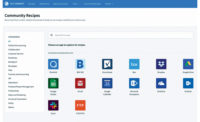Earlier this year, AECOM Hunt completed construction on Walnut Grove Elementary School near Indianapolis, building on an otherwise undeveloped green site. But there was no need up front to build a fresh model of the site in design software. Working in Autodesk Civil 3D, AECOM Hunt had elevation and edge-of-curve data layered against GIS data which was supplemented with drone captures. This blended data was used to track excavation work, and the landscaping crew even used it for quantity take-offs when they had to verify grades.
Prior to GIS giant Esri and BIM software vendor Autodesk’s partnership on a data-sharing initiative, that particular workflow would have been much less smooth, requiring AECOM Hunt’s designers to slowly recreate the site’s geospatial data in their BIM software.
“Having the new data compatibility has accelerated our process,” says Russ Dalton, BIM/VDC manager at AECOM Hunt. “The workflow is the same but faster. Our process is more efficient with the elimination of manual steps transferring data, and the automation is less prone to human error.”
Dalton says before the partnership, AECOM Hunt would access Esri data inside AutoCAD maps with a link to a separate program. The new process has accelerated their workflow, and AECOM Hunt can sync LiDAR data directly into its Revit models now.
Getting to this point has been a multidecade goal for Esri CEO Jack Dangermond, who has long touted openness for the products his company makes. Founded as the nonprofit Environmental Systems Research Institute in Redlands, Calif., Esri is now the world’s largest GIS software provider, overseeing the widely used mapping standard ArcGIS. Getting GIS data directly into construction, Dangermond believes, could help the environment and create the efficiencies he believes are necessary to combat climate change.
“It’s not about the open data, it’s about connecting tools to tools at the data level so that, bang! It just changes things,” Dangermond said during a media Q&A at Autodesk University earlier this year. “There’s a GIS view of the world and there’s the whole engineering, construction, design, build view of the world. The GIS view, for those who don’t know it, is we measure things and we visualize things. Then we do analytics and we support design tools and then people take it to action,” he said.
As Dalton explains, Dangermond and Autodesk CEO Andrew Anagnost’s agreement in November of 2017 was only the beginning of the process to share the data. That effort required engineers from each company to build data workflows that were useful for the other side, a process that meant long hours of development for teams at both companies. AECOM is a strategic partner with both Autodesk and Esri and was eager to get in on that pilot effort.
“We’ve participated in many of their user testing phases and in addition provide feedback,” says John Kizior, global director, project technologies at AECOM. “We encourage all our users to give active feedback on any BIM/GIS workflows or new-use cases,” he says.
One unexpected use that came out of those sessions was putting BIM data into GIS and not the other way around. In an Australian infrastructure project, an AECOM design team started with CAD/liDAR and then created a model directly in Revit as a BIM. The client wanted to see the model moved into a GIS environment to prove the workflow. Architects and engineers from AECOM extracted an IFC file from Revit and then moved it into ArcGIS.
“This grounded the model by putting it into its actual location in space,” says Antoine Burdett, AECOM principal for information management in Brisbane. “It gives us the ability to see critical infrastructure upgrades and modifications and help clients understand how proposed designs will impact them geographically. We are using liDAR to BIM and then moving it into GIS with attributes.”
The proof of concept showed Burdett’s client the company’s capabilities and proved the value of the existing, aging infrastructure.
“What we’re doing is integrating our contextual data right into Revit or into Civil 3D or into Infraworks or AutoCAD, so that they can read our services,” Dangermond said. “It’s not enough to be open data. It’s about doing the hard engineering work to bring that contextualized data directly into the system and then support field operations and do analytics and then do digital delivery across the web.”






Post a comment to this article
Report Abusive Comment